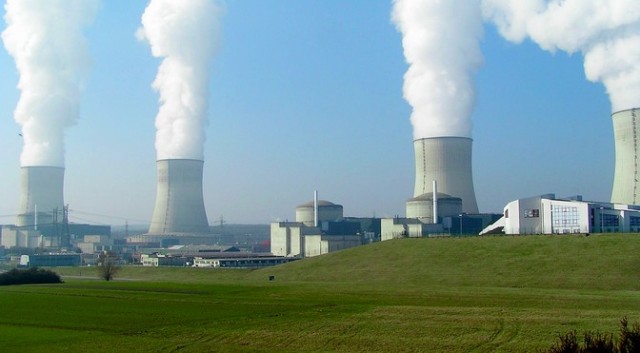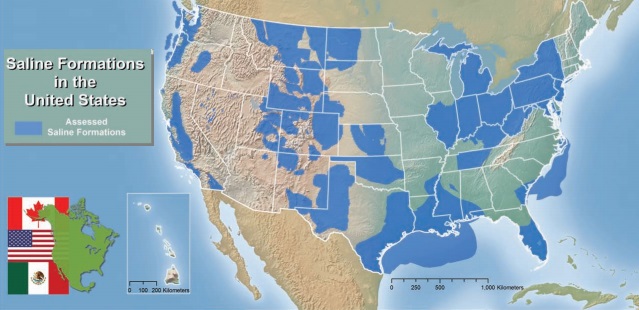
Carbon neutrality has failed – now our only way out of global warming is to go carbon negative
With the mostly failed campaign to prevent climate change from raising global temperatures by more than 2 degrees Celsius, and no real prospect of rolling out significant amounts of renewable power generation in time to prevent a global meltdown, it looks like society only has two real options: Roll out a lot of nuclear power stations right now, or start burying (sequestering) gigatons of carbon dioxide underground. The nuclear option is looking unlikely — but sequestering carbon might just work, if some recent studies are to be believed.
A new report from the Risky Business Project has laid out the long-term consequences of continued climate change for various geographical areas of the United States. Rather than focusing on incredibly dense scientific language, the RBP is led by the business community and emphasizes research conducted by economic firms. The goal was to create a report that would discuss the disruptive impact of climate change on businesses and the US economy.
The result is an approachable report that discusses likely impacts to the US by splitting the country into multiple regions and estimating the chances of various outcomes. The following graph, for example, shows how the increasing likelihood of extreme weather events impacts observed conditions, even if no single storm, heat wave, or abnormally cold winter can be directly linked to global warming.

With our mostly failed attempt to keep climate change below 2 Celisus, the new critical question is how governments might hold the increase to as low a level as possible. Despite improvements, no one seriously expects renewable energy to be ramped up in time to prevent climate change far in excess of 2C — the only way to avoid this limit would be to convert to nuclear or renewable power at a breakneck pace across the entire planet for the next few decades.. It’s not going to happen. So what can we do?
It turns out, we might be able to do rather a lot. Whenever the Intergovernmental Panel on Climate Change (IPCC) issues its reports, a great deal of energy gets expended arguing about the reality of climate change. Some of the IPCC’s more interesting ideas go undiscussed as a result, including the long-term potential for CCS — carbon capture and storage. According to the IPCC, CCS systems are absolutely vital to minimizing the long-term impact of greenhouse gas emissions. [Read: Nuclear power is our only hope, or, the greatest environmentalist hypocrisy of all time.]
Going carbon negative
Many companies today tout various technologies they claim allow them to be carbon neutral, but the only way to hold climate change below 2C in the long term is to actually go carbon negative. This can be achieved through the use of bio-energy with carbon capture and storage, or BECCS for short. The idea is straightforward — as of last year, approximately 10% of total planetary energy was provided by biomass. Plants absorb CO2 as they grow, but the process of turning biomass into fuel typically releases that energy back into the atmosphere. What the IPCC proposes is using the biomass for energy, then using some of the energy generated to sequester the carbon underground in either old oil and gas deposits or in porous rock (known as saline formations) across the US.

Estimates of how much carbon could be stored in saline formations vary widely; the characteristics of the rock strata and its ability to store CO2 over the long-term are barely known — until recently, such rock held little interest for the oil and gas companies that have conducted most US geological research and therefore only a little information is available. The IPCC believes that carbon sequestration is vital to limiting the impact of CO2 buildup — if we fail to do so, we could see spiking values well in excess of 600 ppm (currently we stand a little over 400 ppm).

The long-term goal is to sequester up to two gigatons of carbon per year by 2050, though scientists at Stanford have estimated that as much as 10 gigatons of carbon could be sequestered through this method by that point. Carbon sequestration in geological formations isn’t the only option, but it’s one of the few ideas that’s both achievable and reasonably well understood at this point. There are a few technologies being developed that might help us with carbon sequestration, but really there just hasn’t been much research into it yet.
Other ideas, like seeding the ocean with iron particles to increase carbon sequestration have problems of their own — locking more CO2 into the depths increases ocean acidification, which is already becoming problematic for a number of species. When the ocean is too acidic, many crustaceans can’t form strong shells — the calcium carbonate that they rely on is in short supply. Coral is also negatively impacted, which reduces habitat and food supply for the species that depend on its abundance. [Read: ‘Supergreen’ hydrogen creation could capture carbon from the air and de-acidify the oceans.]
The sheer vastness of the ocean means it may be possible to lock up some carbon in specific areas, but overall, there may not be enough headroom to meaningfully defray the long-term environmental impact of continued fossil fuel use. The alternative is to find a way to sequester carbon geologically — or get used to a world without any ice caps.
Author: Joel Hruska